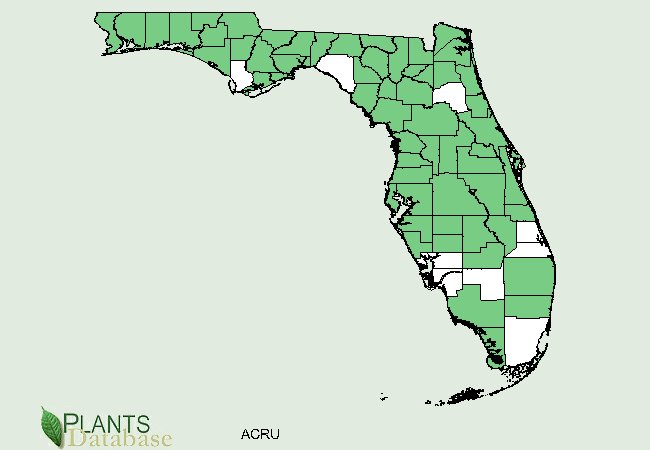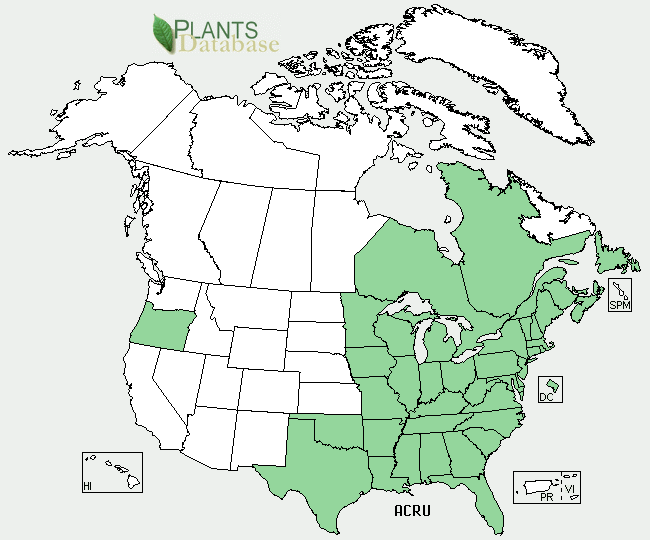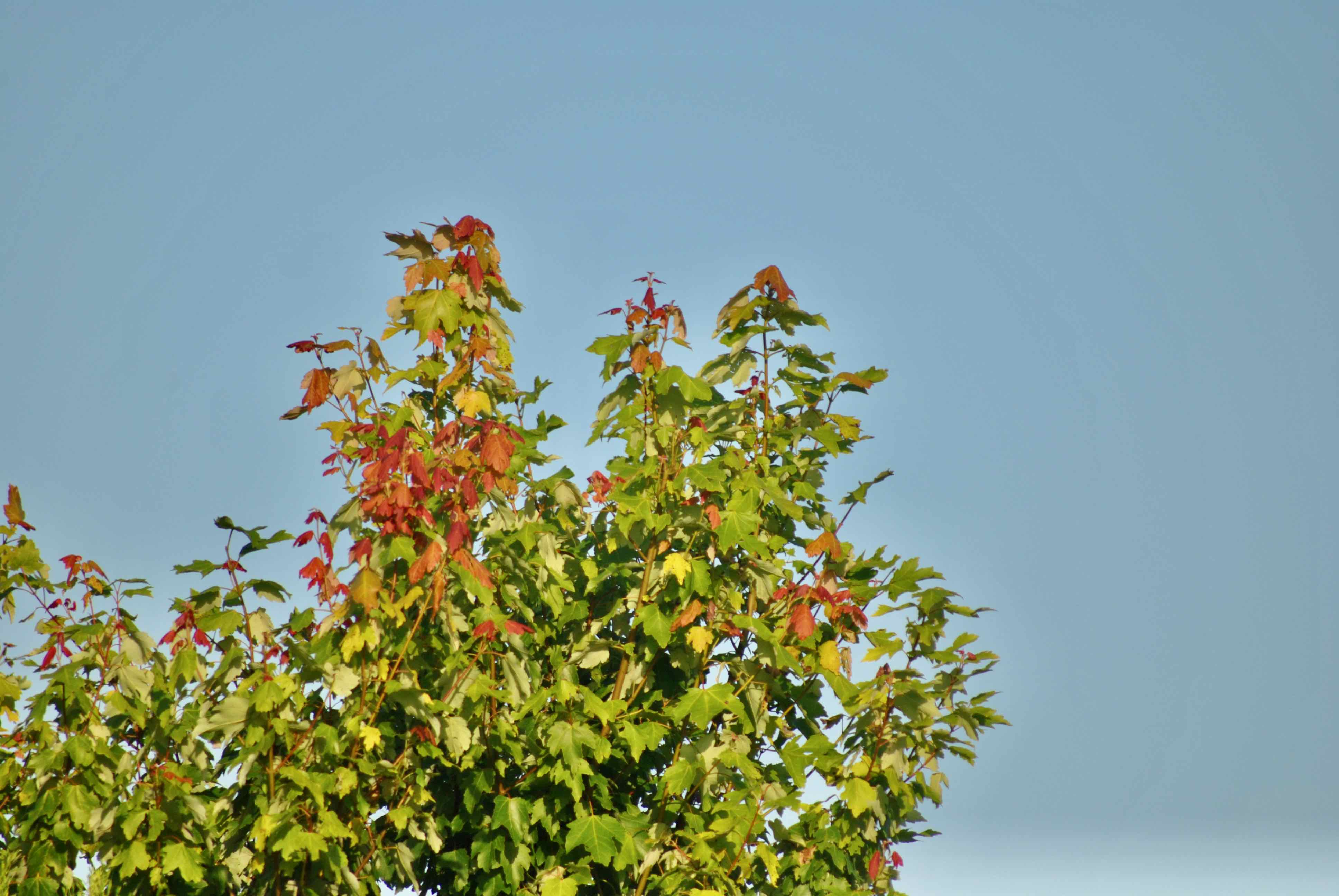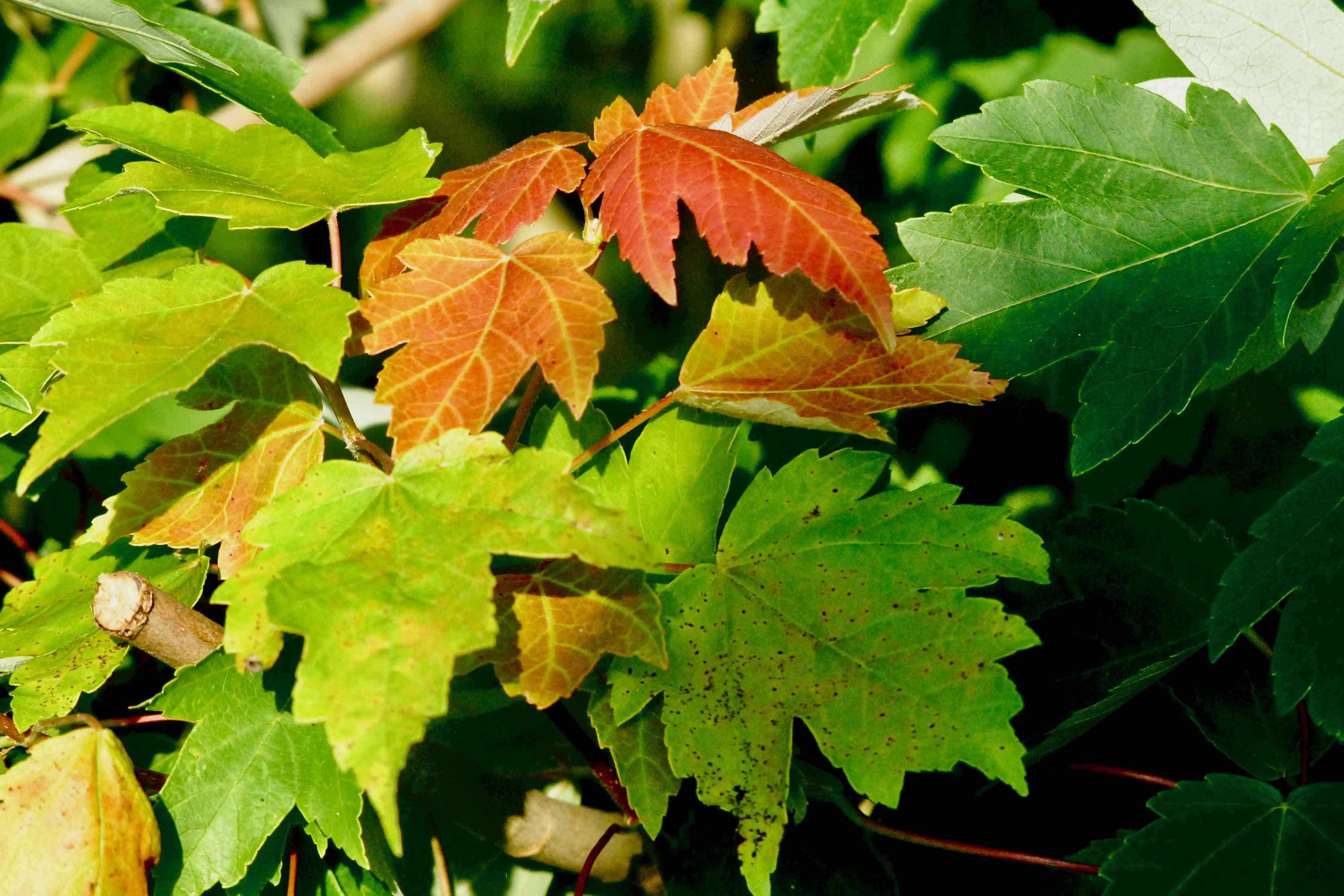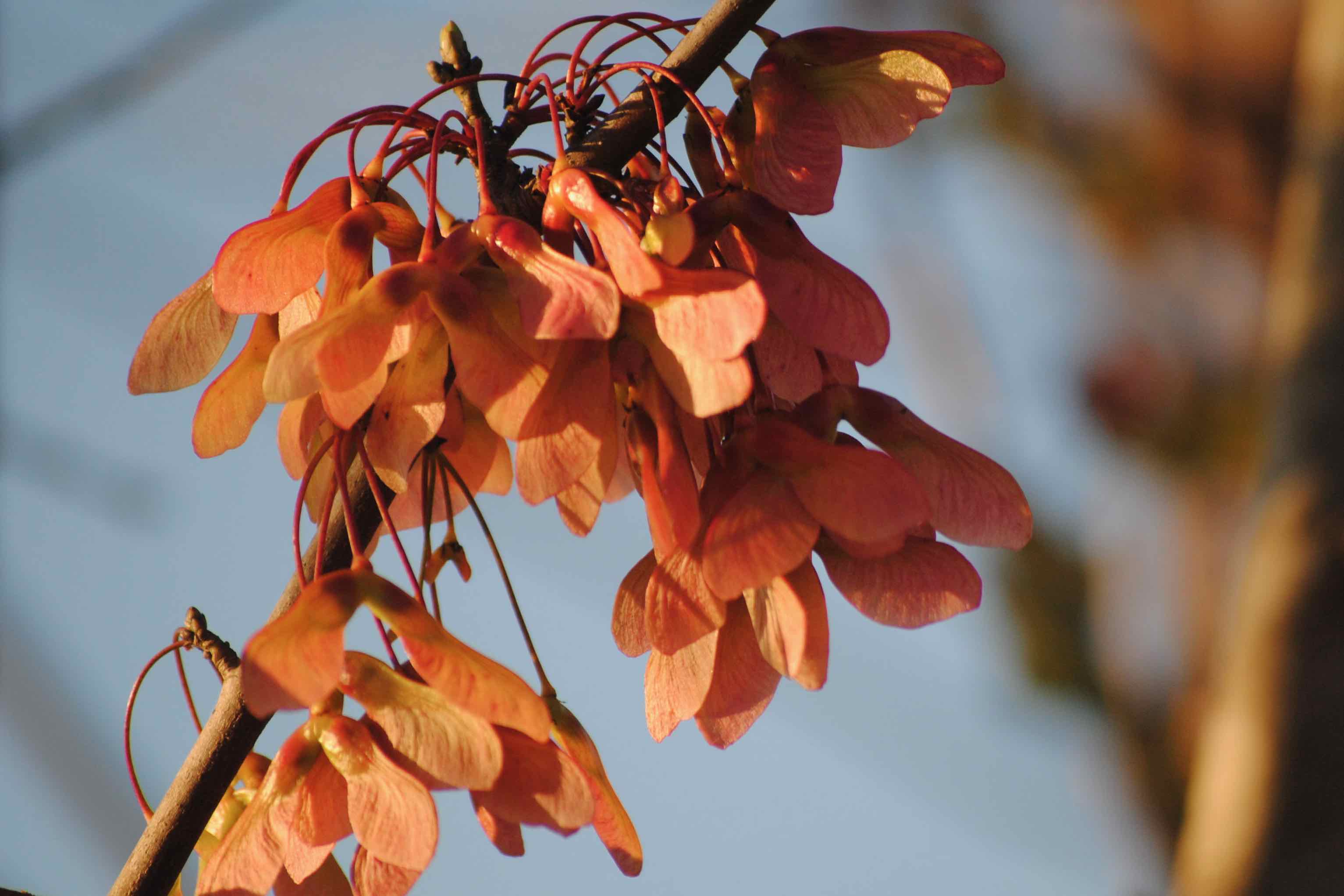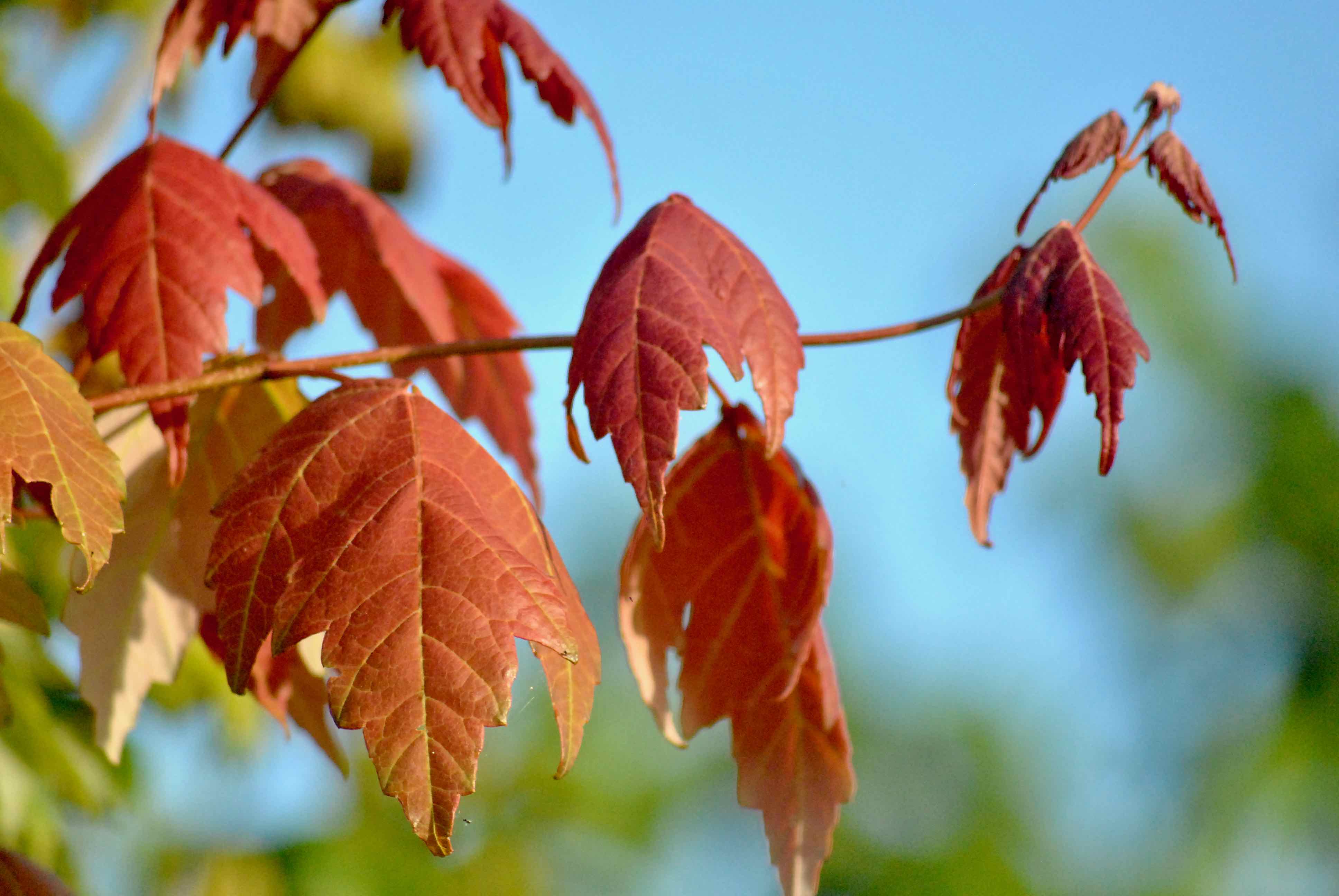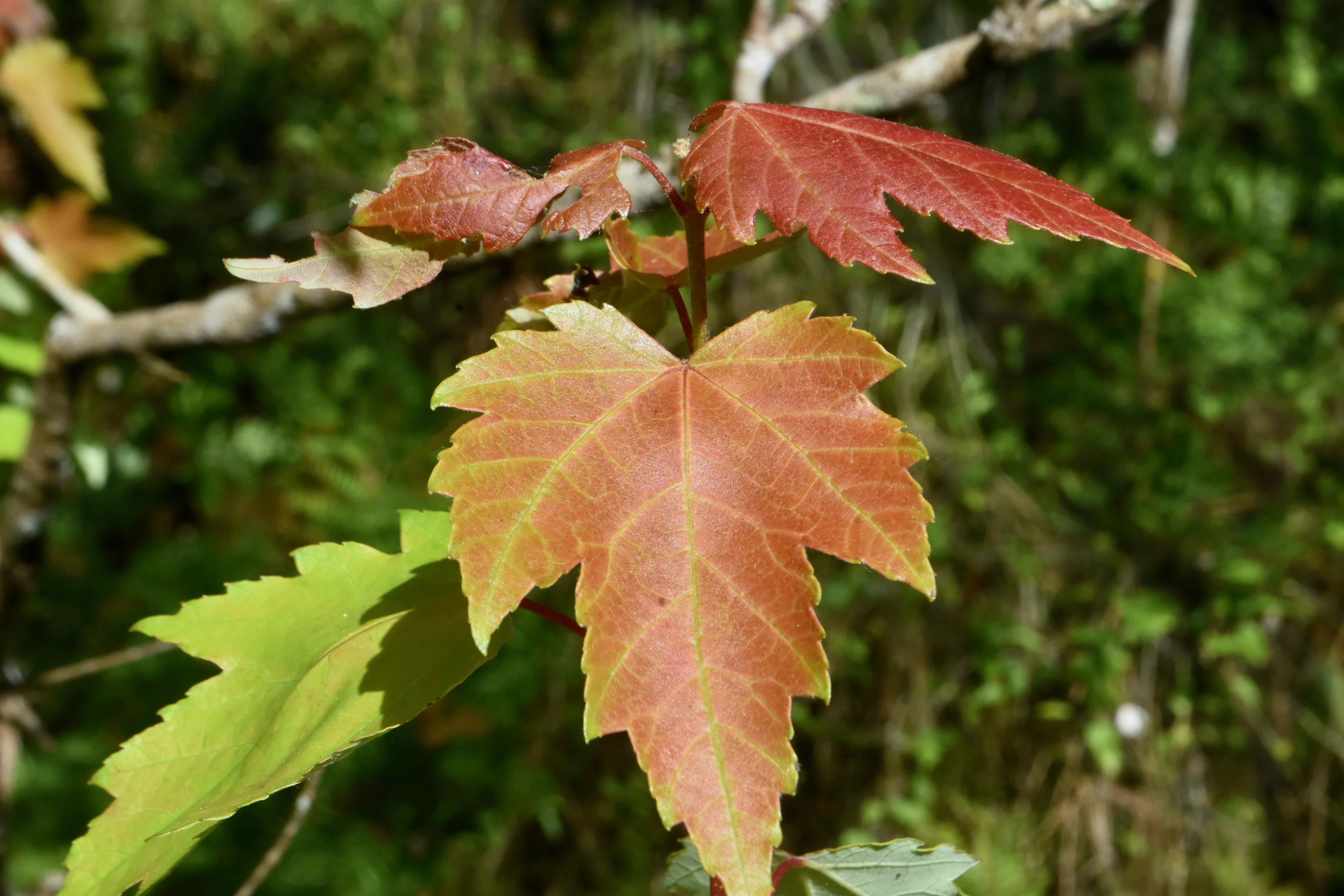
Red maple, photographed at Tall Cypress Natural Area, Coral Springs, Broward County, in March 2020.
There are few sights as glorious as a red maple on a bright, early winter's evening in South Florida. It's about as close you come in the subtropics to an autumn day in Vermont. Well, with some imagination.
Red maples are one of the few trees in South Florida to sport fall colors and by far the most common and widespread. But this tree, known as Acer rubrum to scientists, has much more than good looks going for it. Native Americans depended on red maple for everything from food to medicine to building materials. It was so important medicinally, that one tribe considered red maple sacred. In the second decade of the 21st century, we still find it useful in many ways.
Red maple is a Florida native, found throughout the state as far south as Miami-Dade and mainland Monroe counties, the extreme southern limits of its range. (Some source put Broward as the southern-most limits of its range.) It is the only maple tree native to South Florida. The University of South Florida's Atlas of Vascular Plants has it in every Florida county with the exception of Hendry. (And We're guessing that if one looked in every remote nook and cranny of Hendry it would ultimately be found there, too.)
Red maple is the most widespread of any tree in eastern North America. It's range covers the eastern United States and Canada as far north as New Brunswick and Nova Scotia and west to Minnesota, Oklahoma and Kansas. The feds also include Oregon as part of red maple's native range, the only state west of the Rockies. Other sources, including Oregon State University says it's not.
First thing to know about red maple is that it has an affinity for water, usually found along the banks of streams and rivers and in and along marshes and swamps. Second thing is that red maple can vary widely in its looks, not surprising considering its wide range. Officially three different varieties are recognized these days, but many more have been proposed over the years. Under optimal conditions, it can be a huge tree, reaching as high as 120 feet, with a diameter of four feet. Generally, though, it will top out at half that at most. The red maple's height down here is somewhat limited unless its very near water. The leaves have the classic maple leaf shape, deep, pointed lobes, with serrated edges, but the number of lobes can vary from three to five depending on variety.
New foliage is brilliant red, turning less so as it matures. In fall — late fall to early winter here — the tree can turn various shades and mixes of red, yellow and orange. It flowers and bears fruit in the spring throughout most of its range, but in Florida, "spring" means December and January, depending on how far south the tree is. The fruit is a "winged" seed typical of maple trees. Some animals, particularly birds and squirrels eat the seeds. Cavity nesting birds, including northern flicker woodpeckers, screech owls and wood ducks find homes in red maple.
As we noted, red maple was extremely important to the lives of Native Americans. The Algonquin and Abnaki used the sap to make sugar or as a sweetener. The Seminoles used it to make yokes for their oxen, arrow heads and spoons. Many tribes used red maple to make an eyewash. The Iroquois dried the bark and ground it into a flour to make breads and cakes. Native tribes would use red maple to make a wash for their traps, to remove the scent of an animal they had caught in it. They would make remedies for dysentery, hives and cramps. They would use it to make baskets, furniture and as lumber. The Ojibwa saw it as sacred and used it to decorate their medicine lodges. We still use red maple for lumber but moreso in landscaping, as a shade tree, accent, buffer and more. It might have some utility in restoring stripmines in Florida and elsewhere.
Other name for red maple include swamp maple and scarlet maple. It is a member of Aceraceae, the family of maple trees.
Click on photo for larger image
U.S. Department of Agriculture Distribution Maps
